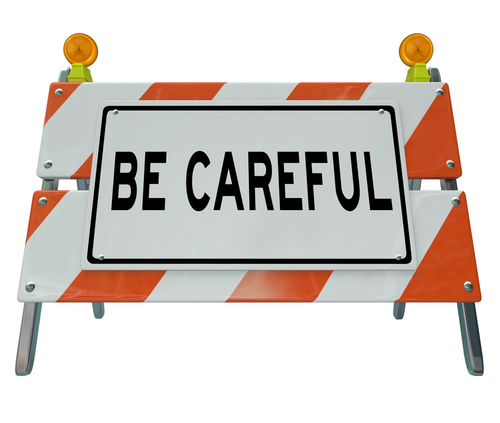In order to use safety signs and tags effectively in your facility and remain in compliance with the OSHA regulations, be sure to take these 7 basic steps.
 |
- Identify all hazards. The first step, of course, is to identify all the potential hazards in all parts of your facility. This includes office and industrial areas as well as public areas and locations outside the main facility. And, in addition to the more obvious hazards, you must identify those that are out of the ordinary, unexpected, or not readily apparent.
- Select or design appropriate safety signs and tags. Once you have identified the hazards, you can select appropriate ready-made safety signs and tags or design your own signs and tags. Whichever option you choose, make sure all signs and tags conform to the requirements of the OSHA regulations (see 29 CFR 1910.145). Your signs and tags should also be consistent in format throughout your facility.
- Ensure proper wording, graphics, and colors. According to the regulations, “the wording of any sign should be easily read and concise. The sign should contain sufficient information to be easily understood. The wording should make a positive, rather than negative, suggestion and should be accurate in fact.” Pictographs that graphically warn of dangers and color-coding that warns of the degree of the danger should be featured on signs so that employees can take in the warning at a glance.
- Position signs carefully. Signs should be positioned so that they are easily visible and legible from a distance. They must be placed to draw maximum attention to the existing hazards. This means you need to give careful thought to where you locate signs around your facility, and you may need to relocate signs from time to time when you make changes or alterations that affect the visibility or usefulness of existing signs or when the equipment or materials that pose the hazard are moved.
Great news! BLR’s renowned Safety.BLR.com® website now has even more time-saving features. Take our no-cost site tour! Or better yet, try it at no cost or obligation for a full 2 weeks.
- Identify safety equipment and fire protection equipment. Make sure that safety equipment such as eyewash stations and safety showers are clearly identified with appropriate signs. Also be sure that all fire equipment is identified with proper signs.
- Use tags properly and effectively. The regulations also say that “tags shall be used as a means to prevent accidental injury or illness to employees who are exposed to hazardous or potentially hazardous conditions, equipment, or operations which are out of the ordinary, unexpected, or not readily apparent. Tags shall be used until such time as the identified hazard is eliminated or the hazardous operation is completed. Tags need not be used where signs, guarding, or other positive means of protection are being used.” The regulations also require that the signal word on a tag (“DANGER,” “CAUTION,” etc.) be readable at a minimum distance of 5 feet or “such greater distance as warranted by the hazard.”
- Review your signage plan whenever new hazards are introduced. Your facility will not be in compliance with the regulations if you just put up signs and forget about them. You must review your sign and tag program frequently to make sure it is still performing the task it was designed to do. For example, whenever new hazards are introduced into the workplace, new signs need to be put up right away. And when temporary hazards arise, tags need to be attached to warn employees until the hazard no longer exists.
Signage Basics for Employees
All employees should be familiar with the color-coding system and pictographs used in workplace signs so that they can recognize the type of danger (or safety) at a glance, even if they don’t have time (or aren’t able) to read the verbal message that gives specific information.
- Red is for danger. Red danger signs and tags with contrasting black or white lettering are used only in areas where an immediate, serious hazard—one that can cause death or serious injury—exists. Flammable liquids are typically marked in red. Red markings are also used for some safety equipment, such as emergency stop bars, buttons, and switches.
Your one-stop safety management resource, available 24/7. Go here to take a no-cost site tour or here to try it in your own office!
- Yellow is for caution. Yellow and black caution signs and tags warn about potential hazards or unsafe practices that could cause minor injuries. Wet floors, radiation, and “Do Not Enter” signs are often found in the form of yellow caution signs.
- Green is for safety. Safety instruction signs have a white background, a green panel, and black and white letters or markings. These signs provide general safety information. For example, they are used to mark the location of emergency exits, first-aid kits, and safety equipment.
The pictographs, or graphics, used on safety signs are usually self-evident. Just to make sure all workers understand their meaning, review pictographs used on safety signs in a safety meeting and give workers a matching quiz to make sure they can match the hazard to the graphic.
